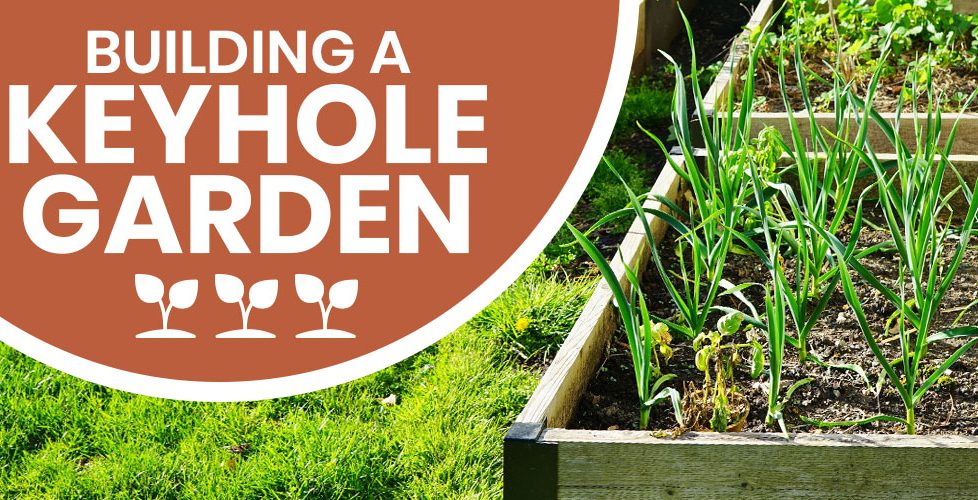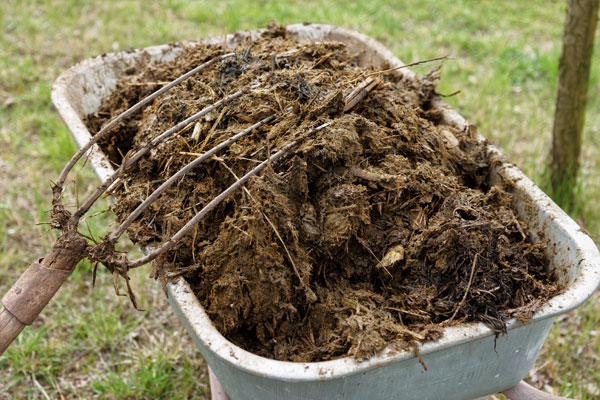Building A Keyhole Garden: Permaculture Homestead – The Tiny Life


NAVIGATION
I’ve had great success with raised garden beds and composting on my homestead, but building a keyhole garden — which combined these two gardening techniques in a streamlined process— took my gardening skills to a whole new level. Now, I have an efficient, thriving ecosystem on my land, which has allowed me to embrace permaculture even more on my small farm.
Common Questions about how to build a keyhole garden
I’ll answer these questions and more as we explore the specifics of keyhole garden design, building, composting, and maintenance.

Hi, I’m Ryan
I discovered keyhole gardens after years of homesteading, so if you haven’t heard of or tried this gardening method yet, don’t beat yourself up. Using the tips I’ve picked up from building a keyhole garden on my own homestead, you’ll be DIY-ing it like a pro in no time.


Keyhole gardens are a productive use of a small space, and once they’re in place, they’re crazy easy to maintain. In only a few hours, you can build your own keyhole garden in eight simple steps using materials you probably have lying around your homestead already.
Before I detail the steps to building your own keyhole garden, let’s take a closer look at what this type of garden is, how it works, and the materials you’ll need to get started.
A keyhole garden is a raised-bed gardening venture designed to maximize a small area, poor soil conditions, and water usage. It’s basically a circular raised bed with a wedge cut out, so it looks like a pie with one piece missing.
 This missing piece allows access to a compost basket in the center of the garden, which is the key ingredient to success with a circular raised garden. A keyhole garden is effective because it’s a garden and a compost pile in one — its unique shape means you can evenly feed the soil by watering a compost well at the very center.
This missing piece allows access to a compost basket in the center of the garden, which is the key ingredient to success with a circular raised garden. A keyhole garden is effective because it’s a garden and a compost pile in one — its unique shape means you can evenly feed the soil by watering a compost well at the very center.
Having a compost barrel built into your garden cuts down on water, compost, and time waste, allowing your garden to care for itself which is the very essence of permaculture.
The shape of a keyhole garden bed is truly the key to how the whole thing works. The circular shape allows all four parts of a keyhole garden to produce thriving plant life because it lets the watered compost at the center feed all the soil evenly, giving your plants the nutrients they need. As the shape enables your plants to receive equal nutrition, the drainage layer ensures they won’t drown in excess water, and the layer of organic material will gradually break down into richer compost in your soil.
Four Parts Of A Keyhole Garden
Once your own DIY keyhole garden is in place, upkeep is easy. You just add kitchen scraps and water to your compost tower by entering the notch that, from above, looks like a keyhole. Watering the compost basket causes nutrient-packed liquid to seep into the soil all around the basket, feeding your soil the nutrients that your plants need to grow healthy and strong.
Keyhole gardens are a great place to use your greywater if you use a greywater system on your homestead. Plus, it’s an additional way to increase your garden’s permaculture.
Now that you know how a keyhole garden design works, let’s look at the materials you’ll need to build one. Sure, you might be tempted to run out and buy a bunch of new supplies, but you can honestly use just about any kind of scrap material to build a keyhole raised garden, so don’t be afraid to try using what you have on hand. I find any building project on my land, including this one, to be a great opportunity to recycle materials I already have around the homestead, but it’s your call. These gardens can be as fancy or as makeshift as you’d like.
Here are a few general things you will need
Now that you know the basics of how a keyhole garden works, let’s break down how to set one up in eight simple steps.

Don’t stress about making your ground perfectly smooth, but choosing a spot that’s level is an important first step as it not only makes the building process a lot easier but also ensures that water from the compost well can reach all of your soil. An unlevel keyhole garden will result in some of your plants getting more water and nutrients than others.
After clearing the area of weeds and debris, use the materials you have on hand to plot out the circumference of your keyhole raised garden. The easiest way I’ve found to measure out a keyhole garden is hammering a sharp stake at the center (where the compost basket will be) and tying a three-foot string to it. Pulling this string tight and walking in a circle will give you the full dimensions of what will be your keyhole garden — a radius of 3 feet and a full diameter of 6 feet.
Keeping your keyhole garden less than 6 feet across will help ensure your watered compost can reach all of your soil to help your plants thrive.
Since I had chicken wire at my disposal already, that’s what I used to create a cylindrical compost basket, but you could use weld wire or hardware cloth as well. I also used garden stakes to keep the basket in place and help it keep its shape once the inner layers of the garden were added in.
The materials you can use for building a keyhole garden are fairly limitless. Fence boards, scrap lumber, stones, concrete blocks, bricks, landscaping blocks, and logs are all tried-and-true materials for creating a sturdy raised bed. Really, all you need is something that will contain the layers of organic matter and soil you’ll be putting inside the bed.
Follow your marked perimeter as you lay blocks or screw cedar boards together, but don’t forget to create a notch where you can walk to the center of the garden to access your compost easily. This notch is a necessary part of your keyhole garden design because, without it, you’d be left trying to reach the inner compost barrel from outside of the garden walls to add scraps and water.
Once your walls are up, you’re ready to start filling in your garden layers. Start by adding a level of gravel, sticks, or rocks (or a combination) at the bottom to help your DIY keyhole garden drain properly.
Green materials include decomposable plant material, shredded leaves, and yard clippings, while brown materials include things like straw and old newspapers. Your organic matter should be over a foot deep, but I suggest keeping it under 2 feet.

The top layer of your composting keyhole garden will be the soil where you plant your vegetables (or other plants). Add a lightly packed layer of soil that is 8 to 10 inches deep, making sure it slopes gently down from the center to the outer walls.
The compost water will start seeping into your garden soil immediately, but the more your scraps break down, the more nutrients will be released, so consider waiting a week or so before planting.
As time goes on, try to keep your compost level with the soil in your garden.

Lightly stirring your compost by turning it over once or twice a week with a shovel or other gardening tool will help it decompose faster and release more nutrients into the soil.
Your very own DIY keyhole garden is ready. Plant your favorite vegetables, herbs, or flowers and watch your own little ecosystem flourish!

You already have all the basic steps you need to get started with your keyhole garden. But before you get started, there are a few more tips and tricks I’ve picked up since starting my own keyhole garden that will help the process go even easier.
Keyhole Garden Tips

If you’re thinking that building a keyhole garden sounds like a lot of work, you’re not wrong. The truth is, though, it’s only a lot of work at the beginning. Once everything is in place, it practically takes care of itself. All you have to do is add compost and water to the center basket.
Yes, a keyhole garden is absolutely worth the extra effort to build a round raised bed. After two to three hours of work, you’ll have a thriving, almost self-sufficient little garden that makes ultra-efficient use of your time, compost, and water.
I’ve found that the biggest benefit of keyhole gardens is how they reduce waste, encourage efficiency, and promote a permaculture mindset on my homestead. The water and compost are funneled directly into the soil where your plants need it to thrive, and all at little time or inconvenience to you.

The ideal depth for a keyhole garden is between 2 and 3 feet. This depth includes all the layers: drainage, organic matter, and soil.
The main problem with a keyhole garden arises from not building it with your local climate in mind. If you live in an area that’s prone to wet winters, you might need a larger drainage layer to keep your plants from drowning. If, on the other hand, your land is dry or your ground is well-drained, you might hardly need a drainage layer at all.
Ideally, a keyhole garden should be built on fairly level ground to avoid the compost water draining unevenly. If your only sunlit area happens to be on a slope, you might try a different gardening solution, like terraced vegetable beds.
While you’re making your keyhole garden plans, chances are you’ll come across some keyhole garden kits advertised online. While these kits can be helpful and even cost-effective for those just starting out, most homesteaders I know are fairly proficient DIY-ers with lots of scrap materials at their disposal.
If you have the materials and know-how, I’d honestly recommend making one yourself. Using materials you have on hand also reduces waste and contributes to the keyhole garden permaculture ideal.
It’s official. You have all the knowledge you need to pick up your scrap materials and build a sustainable, thriving keyhole garden on your own homestead. Don’t let a few hours of work keep you from reaping the rewards of these uniquely efficient gardens while adopting permaculture practices on your land.
Your Turn!
